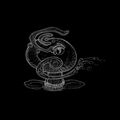Template:Selected anniversaries/August 5: Difference between revisions
No edit summary |
No edit summary |
||
| Line 1: | Line 1: | ||
<gallery> | <gallery> | ||
||1729 | ||1729: Thomas Newcomen dies ... engineer, invented the eponymous Newcomen atmospheric engine. | ||
||Johann Georg Büsch | ||1800: Johann Georg Büsch dies ... mathematics teacher and writer on statistics and commerce. Pic. | ||
||1802 | ||1802: Niels Henrik Abel born ... mathematician and theorist. | ||
File:Sir Francis Ronalds.jpg|link=Francis Ronalds (nonfiction)|1816: The British Admiralty dismisses [[Francis Ronalds (nonfiction)|Francis Ronalds]]'s new invention of the first working electric telegraph as "wholly unnecessary", preferring to continue using the semaphore. | File:Sir Francis Ronalds.jpg|link=Francis Ronalds (nonfiction)|1816: The British Admiralty dismisses [[Francis Ronalds (nonfiction)|Francis Ronalds]]'s new invention of the first working electric telegraph as "wholly unnecessary", preferring to continue using the semaphore. | ||
| Line 11: | Line 11: | ||
|File:Francis Galton 1850s.jpg|link=Francis Galton (nonfiction)|1817: Statistician, sociologist, psychologist, anthropologist, eugenicist, tropical explorer, geographer, inventor, meteorologist, proto-geneticist, and psychometrician [[Francis Galton (nonfiction)|Francis Galton]] publishes his monumental study of [[crimes against mathematical constants]]. | |File:Francis Galton 1850s.jpg|link=Francis Galton (nonfiction)|1817: Statistician, sociologist, psychologist, anthropologist, eugenicist, tropical explorer, geographer, inventor, meteorologist, proto-geneticist, and psychometrician [[Francis Galton (nonfiction)|Francis Galton]] publishes his monumental study of [[crimes against mathematical constants]]. | ||
||1855: Alfredo Capelli born ... mathematician who discovered Capelli's identity. | ||1855: Alfredo Capelli born ... mathematician who discovered Capelli's identity. Pic: https://memim.com/alfredo-capelli.html | ||
||1860: Johannes Max Brückner born ... geometer, known for his collection of polyhedral models. | ||1860: Johannes Max Brückner born ... geometer, known for his collection of polyhedral models. | ||
| Line 41: | Line 41: | ||
||1957: Heinrich Otto Wieland dies ... chemist and academic, Nobel Prize laureate. | ||1957: Heinrich Otto Wieland dies ... chemist and academic, Nobel Prize laureate. | ||
||1964 | ||1964: Vietnam War: Operation Pierce Arrow: American aircraft from carriers USS Ticonderoga and USS Constellation bomb North Vietnam in retaliation for strikes against U.S. destroyers in the Gulf of Tonkin. | ||
|| | ||Royal Raymond Rife dies ... inventor and early exponent of high-magnification time-lapse cine-micrography. In the 1930s, he claimed that by using a specially designed optical microscope, he could observe microbes which were too small to visualize with previously existing technology. Rife also reported that a 'beam ray' device of his invention could weaken or destroy the pathogens by energetically exciting destructive resonances in their constituent chemicals. Rife's claims could not be independently replicated, and were discredited by independent researchers during the 1950s. Pic. | ||
File:Skip Digits.jpg|link=Skip Digits|1981: Musician and alleged math criminal [[Skip Digits]] begins North American tour. | File:Skip Digits.jpg|link=Skip Digits|1981: Musician and alleged math criminal [[Skip Digits]] begins North American tour. | ||
||Jerzy Neyman | ||1981: Jerzy Neyman dies ... mathematician and statistician. | ||
||Solomon Kullback | ||1994: Solomon Kullback dies ... cryptanalyst and mathematician, who was one of the first three employees hired by William F. Friedman at the US Army's Signal Intelligence Service (SIS) in the 1930s, along with Frank Rowlett and Abraham Sinkov. | ||
||2008 | ||2008: Neil Bartlett dies ... chemist and academic. | ||
||2014: Mathematician and academic Dmitri Anosov dies. He made contributions to dynamical systems theory. Pic. | ||2014: Mathematician and academic Dmitri Anosov dies. He made contributions to dynamical systems theory. Pic. | ||
||John Alan Robinson | ||2016: John Alan Robinson dies ... philosopher, mathematician, and computer scientist. | ||
Creature_3.jpg|link=Creature 3 (nonfiction)|2018: ''[[Creature 3 (nonfiction)|Creature 3]]'' voted Image of the Day by the citizens of [[New Minneapolis, Canada]]. | Creature_3.jpg|link=Creature 3 (nonfiction)|2018: ''[[Creature 3 (nonfiction)|Creature 3]]'' voted Image of the Day by the citizens of [[New Minneapolis, Canada]]. | ||
</gallery> | </gallery> | ||
Revision as of 11:39, 5 October 2018
1816: The British Admiralty dismisses Francis Ronalds's new invention of the first working electric telegraph as "wholly unnecessary", preferring to continue using the semaphore.
1901: "Fightin'" Bert Russell agrees to fight three rounds of bare-knuckled boxing at World Peace Conference.
1910: Mathematician Julius Petersen dies. His famous paper Die Theorie der regulären graphs is a fundamental contribution to modern graph theory.
1914: In Cleveland, Ohio, the first electric traffic light is installed.
1921: New version of Bernoulli family tree powered by cellular automata.
1920: Artist George Tooker born. His paintings will depict his subjects naturally, as in a photograph, but the images will use flat tones, an ambiguous perspective, and alarming juxtapositions to suggest an imagined or dreamed reality.
1981: Musician and alleged math criminal Skip Digits begins North American tour.
2018: Creature 3 voted Image of the Day by the citizens of New Minneapolis, Canada.







